QQ-Sports > Basketball > Space basketball support, how the Timberwolves cracked the Warriors joint defense and one-point four-point connection
Space basketball support, how the Timberwolves cracked the Warriors joint defense and one-point four-point connection
The Minnesota Timberwolves defeated the powerful Golden State Warriors and advanced to the Western Conference Finals again.
Looking through the last four games the Timberwolves won, you will be surprised to find that in these four games, the Timberwolves' three-point shooting percentage reached 42.6%. The Warriors' three-point shooting percentage is only 31.4%, so it is not difficult to see that Curry's quit has an incalculable loss of combat power to the Warriors.
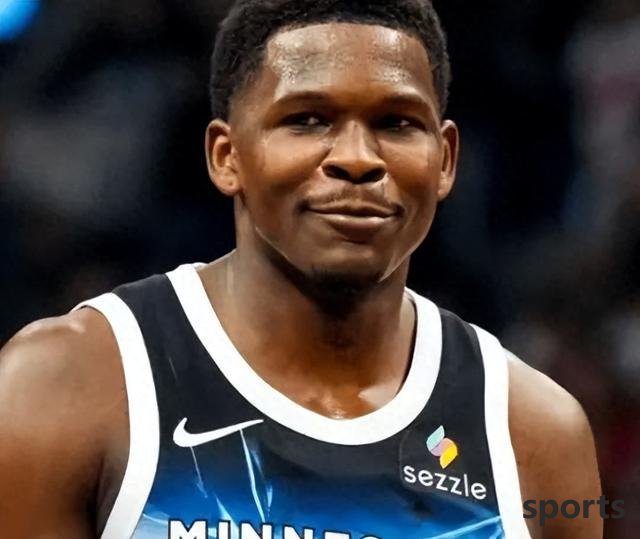
At this time, the Warriors were unable to use super three-point firepower to make up for the impact of their body shape disadvantage, resulting in the body shape disadvantage being even more exposed. Warriors coach Cole did not hesitate to reuse Kumingga, and activated Santos and TJD, hoping to lengthen the rotation and add fresh blood, but unfortunately he failed to do so.
On the defensive end, in order to make up for his physical weakness, he played a big move in joint defense and stared at four defenses, but was still resolved by the Timberwolves one by one.
1. Regional joint defense
Regional joint defense and man-to-man are the two basic formations of basketball defense.
The characteristic of regional joint defense is that defensive players perform their own duties and are responsible for the defense in specific areas. They limit the opponent's offensive space through teamwork, and are especially good at protecting the penalty area and forcing the opponent to take action on the outside. Common regional joint defense formations include 2-1-2, 1-2-2, 2-3, 3-2, 1-3-1 and counter-level joint defense.
In the NBA, teams use regional joint defense based on the following three situations:
1. Make up for the body shape disadvantage - when the team's overall height is insufficient, use the team's team cooperation to enhance the penalty area defense.
2. Hide defensive weaknesses - When individual players have poor single defense capabilities, reduce the risk of targeting through joint defense.
3. Maximize the advantages of basket protection - When the team has a top basket protection inside, use joint defense to amplify its defensive influence.
The Warriors are more in the first situation due to their physical weakness and want to use their team strength to make up for it.
And regional joint defense has its disadvantages: one is outside the three-point line, and the other is the connection between the two defensive areas.
The Timberwolves cleverly use this to play basketball in space and transfer the ball smoothly, hitting the Warriors' weakness. This is also the reason why the Timberwolves made excellent three-pointers!
Timberwolves' breaking joint defense moves are as follows:
1, fast attack and early attack
launch an attack against the opponent's defense not being completely closed, which is undoubtedly the first killing move to break the defense.
The following picture is a typical example. The offensive and defensive conversion ball was quickly passed to the frontcourt and then derived. In the end, Conley made a wonderful pass and Edwards made a three-pointer.
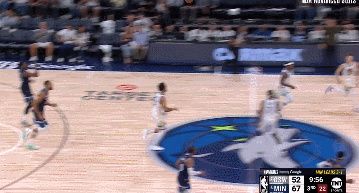
2. Three-point shooting
Since the joint defense will inevitably relax the defense of three-pointers, by effectively transmitting the ball, creating three-point opportunities can cause damage.
For example, the following two goals are typical ways to break 23 joint defense. Edwards uses his own restraint to pass Divinchenzo, while the other is a three-pointer from a single shot.
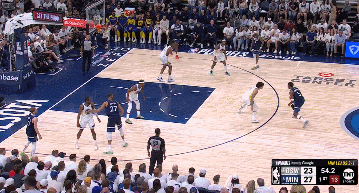
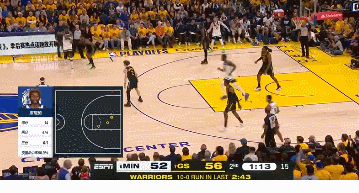
The Warriors put on the ball below in 131. Randall held the ball from outside the three-point line, and passed Edwards with a three-pointer and broke the joint defense.
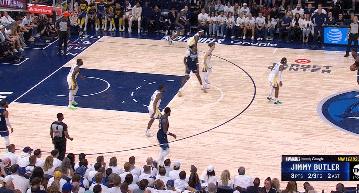
3. It is not enough to break the joint defense with a three-pointer, because the three-pointer always feels down, and a team with sound tactics can take a lot of means to break the joint defense.
Transfer balls are very important. The team needs someone with good support or passes. Choose the appropriate position according to the joint defense formation (such as standing in the free throw area or standing in the arc top) and the initiation mode (such as standing support or breakthrough).
and sending air cuts into joint defense weaknesses is a good choice.
The following goal changed from 32 joint defense to 23 joint defense, and Randall supported the top of the arc and made a wonderful pass Walker scored a throw-in at the joint defense connection.
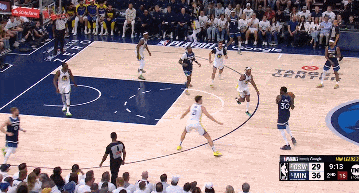
The ball below is Edwards used the breakthrough to attract the joint defense and made a wonderful pass by Gobert to score.
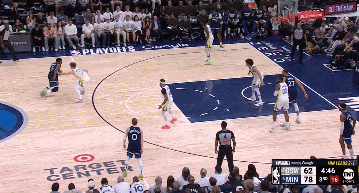
4. Transfer the ball to create singles opportunities
When you have an advantage in singles, creating singles is a trick to break the joint defense.
The following is a typical example. The Warriors used 32 joint defense, Randall made a wonderful pass in the inside, Reed, and forced the Dream Green to win.
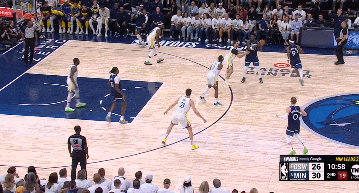
2. One-pointed four-way
Box-one (one-pointed four-way
) is being used more and more, and is used to mark super scorers such as Curry, Edwards, and Alexander. The
set has begun to be used in large quantities in the 2019 NBA Finals. The Raptors led by Coach Nass restricted Curry by relying on the "one-point four-way" defensive system and finally defeated the Warriors to win the championship.
The so-called "one-eye four-couple" refers to a defensive pioneer who implements man-to-man defense, specifically targeting the opponent's core scorer (such as Curry), and the other four players form a 2-2 joint defense or 1-2-1 joint defense.
This system perfectly combines the targetedness of man-marking defense with the synergy between joint defense. Its essence lies in:
1. Implement "high-voltage defense outside the three-point line" on the ball holder.
2. The restricted area forms multiple auxiliary defense barriers.
3. Selectively short non-shot players.
In the Warriors' box-one, they may use rectangular or diamond positions, mainly targeting Edwards to consume him and force him to shoot from the outside.
When he breaks through to the paint area, immediately start the "trap" double-team, while the weak side defender keeps rotating.
The system has inherent flaws: a defensive vacuum will appear on the weak bottom corner, and excessive dependence on opponent role players are inaccurate.
When facing box-one, Edwards used his gradually improved tactical literacy to crack the Warriors' defense.
Below is Edwards used the restraining force to compress the opponent's defense line and made a wonderful pass from Randall to crack the rectangular position of one-point defense.
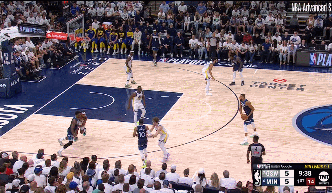
The following ball is Edvaz using his restraint to pass Randall in the left corner..
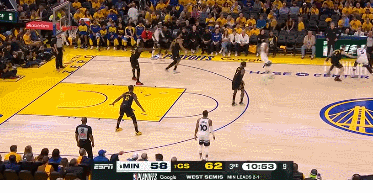
From these two goals, we are not difficult to see that Edwards' overall situation has improved, and the passes are all at the weakness of staring at the four-way team.
In short, in this round of the series, the Timberwolves showed extraordinary tactical qualities, and their tricks to break the joint defense were released, providing us with a wonderful basketball feast.
Related Posts
Trail Blazers doctor s day, it seems Yang Hansen is about to teach his teammates the Chinese version of Happy Birthday
BasketballOn November 22, the Trail Blazers officially updated the news and posted a video of a group of players singing happy birthday to the team’s psychiatrist Dr. Chantelle Green. The latter part of the video is still the Chinese version of the Happy Birt...
moreThis season, the Clippers offensive and defensive efficiency/turnover rate/tempo and other 12 statistics are at the bottom of the league.
BasketballHupu News November 21 NBA regular season, the Clippers lost to the Magic 101-129. After this game, the Clippers' record came to 4 wins and 11 losses, ranking twelfth in the Western Conference. According to statistics, the Clippers rank last in t...
moreThe league s No. 1 player still has four first-round picks in 26 years! He is expected to win the No. 1 pick, and the Clippers will help him build a dynasty.
BasketballOn November 22, after the new NBA season started, many teams had the idea of rebuilding because their records were not ideal. For example, the Kings and Mavericks have put many stars on the shelves. When the team cannot make further progress, re...
more
Hot Posts
- The second highest net rating, +11 games and 10 wins, the momentum is overwhelming! What are the strengths of the Rockets this season?
- James announces a major decision early tomorrow morning! Su Qun: Is it the last dance or just an advertisement?
- The Lakers sign and 1 snatch, 21-man roster is released! Doncic loses his weight in a crazy way, and James creates history
- Just now! The Nuggets officially signed Kessler Edwards
- Pitino said: Modern basketball no longer has pure point guard
- Hu Mingxuan really thinks he is Curry, please pay attention to Guo Shiqiang s reaction, fans line up to apologize
- NBA triple-double star Westbrook joins the Kings
- Doncic has made efforts, and the Lakers are talking about the deal between Kneckett and Kleber!
- Bain s transaction value exceeds Doncic? Harrison was crazily mocked again: the worst general manager in history
- Lose 30 points and go home! The team that defeated James was eliminated by the Thunder. The more miserable the Timberwolves are, the more difficult the Lakers are.
Recent Posts
-
At the wrong time, Warriors Green left the game in the last few minutes of the 3rd game of the Timberwolves
-
Being the 8th man is more than enough! Should the Knicks completely put the forward general back into the rotation lineup?
-
The four giants are crazy! The Western Super Strong Team was born, and the biggest opponent on the Thunder s road to defending the title appears
-
18 million in 4 years! The Lakers really don t lose money by signing him, but Redick s approach is incomprehensible
-
The Rockets want to use Shen Jing to replace the letters, the Bucks want to be the second place, averaged 13 points per game and non-selling products, and KD doesn t change it
-
James has never received any major injuries in his career, and his physical talent is James strongest talent
-
Why is it rare for the shooting guard to be elected as MVP?
-
Brown: We re going to cheer up and there s a lot to look forward to. This is not the end of the world
-
The league teams are divided into categories, all the top five teams from the West, and the Rockets become the number one competitor for the championship
-
New pattern in the West: Rockets and Nuggets have become the biggest threat to the Thunder, and there are too many problems with the Lakers, the Warriors lack operations